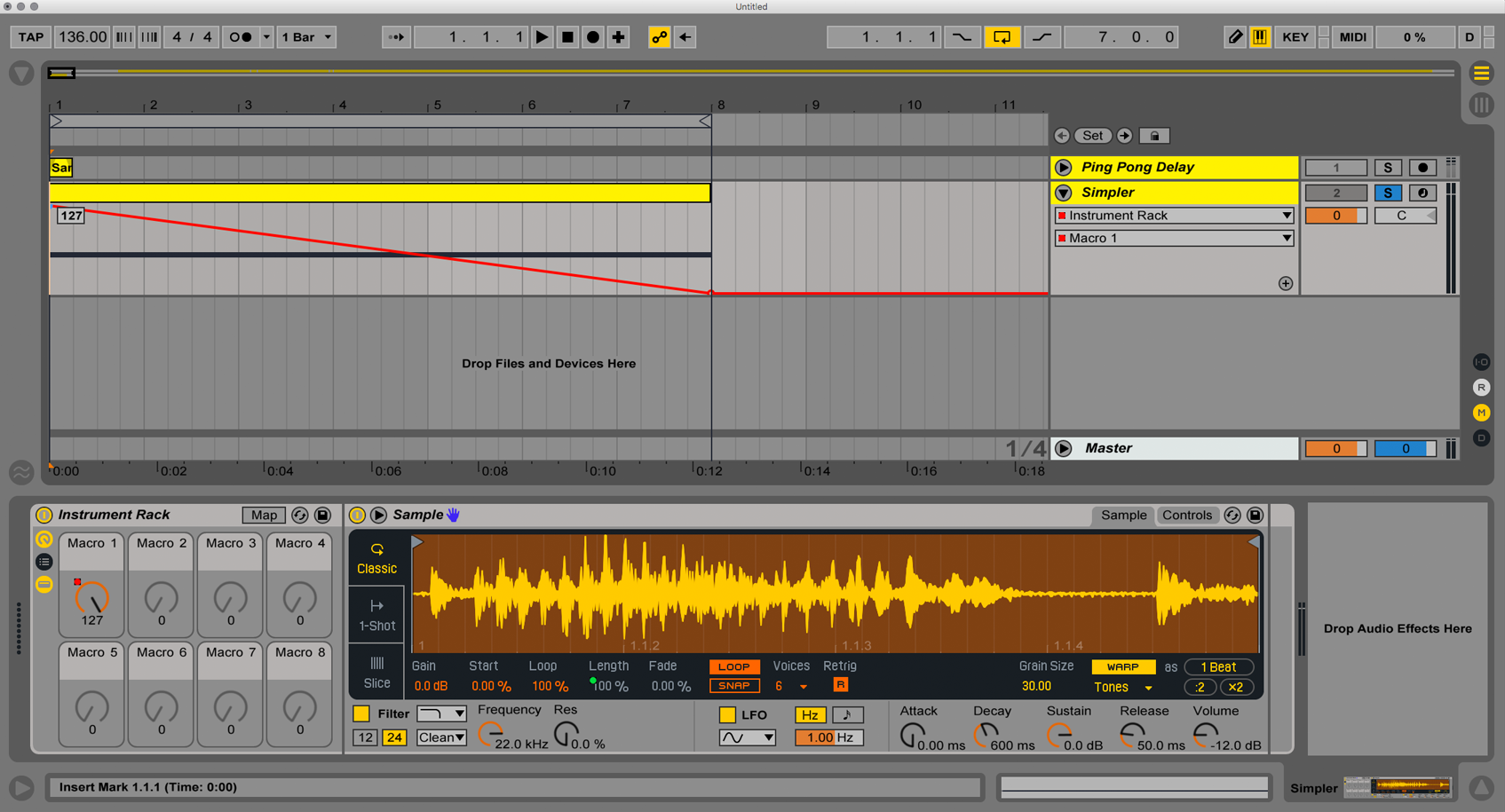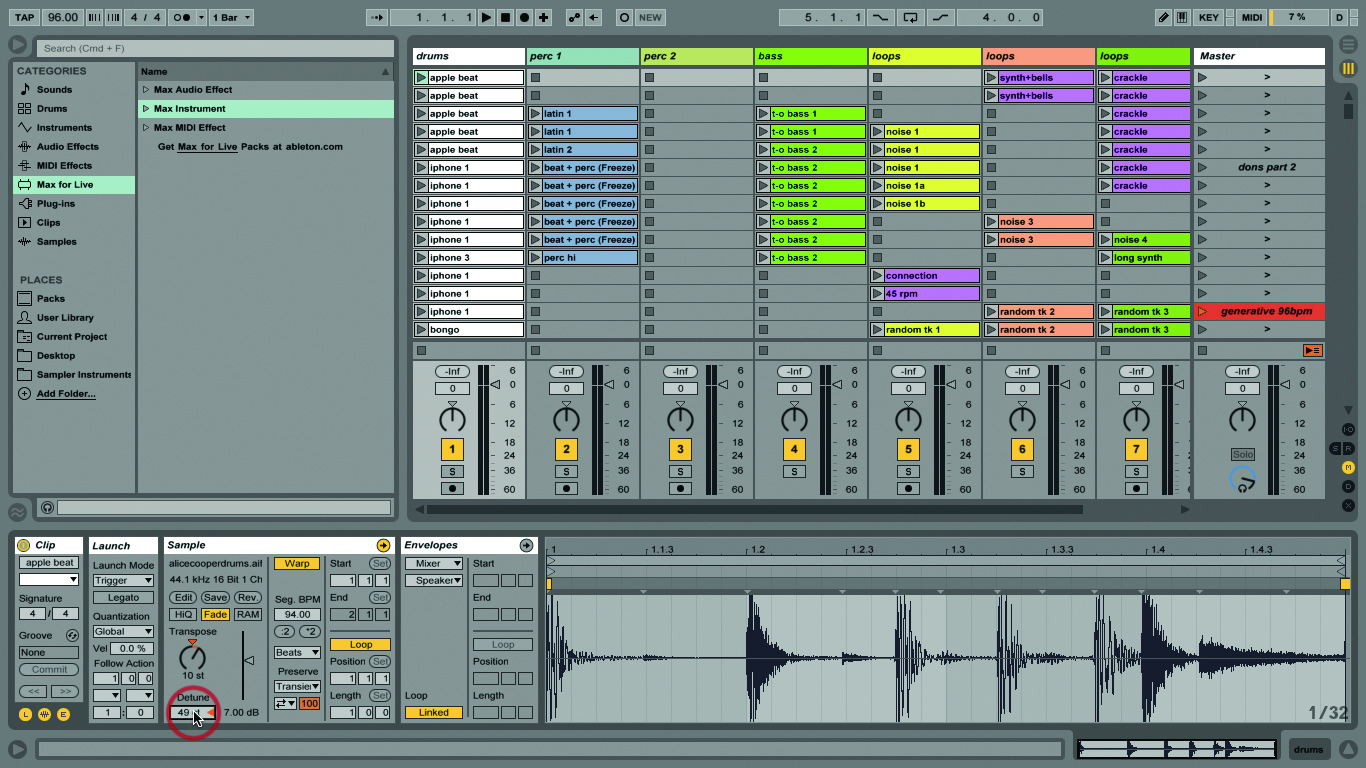Re: Ableton Live pitch-shifting Post by yur2die4 » Fri May 13, 2016 4:10 pm If you look in Packs in the Ableton site, filter it to free max ones, there is one pack of devices that utilize tools from the more recent version of max. Step 1: Open Live, set the project tempo to 128bpm and drag your vocal onto an audio track. Duplicate the audio track by right-clicking the track name and selecting Duplicate. Name the first track Main Vocal, and the second track Processed Vocal. Step 2: Double-click the clip on the Processed Vocal track to bring up its Clip view. Set plays at wrong tempo or pitch. Live may not automatically detect the sample rate of your audio interface in certain scenarios, for example when audio is running on another application. This can cause a Live Set to play back at a faster or slower speed, or a different pitch. To fix this, make sure that the sample rate of your interface. Ableton Chorus stock plugin tutorial by Reid Stefan Realest Puppet in The game. In this ableton 10 audio effect tutorial we cover pitch modulation effects us.

Experiment with the vintage digital charm of a classic piece of hardware without having to track down and invest in the original. The DHM 89 pitch-shifting delay unit was released in 1979 by the French manufacturer Publison. PitchLoop89 takes its cues from the hardware, preserving some original limitations for creative reasons, while making some contemporary enhancements for sound control, versatility and performability.
Jumps, jolts and jitters
Ableton Pitch Shift
The device contains two independent pitch-shifting delays. These circular delays hold short snippets of audio, the length of which changes according to the bandwidth selected. In the original hardware this was due to a RAM limitation, but it’s now a creative feature, as switching between sample rates creates octave jumps, and low sample rates can change the character of the sound and create interesting sonic artifacts. Changing the speed and direction of playback in the delays allow for pitch shifting and segment reversal.
The two pitch-shifting devices can function independently, or as a single stereo effect, and new filtering and feedback routing enhancements allow control over sound that wasn’t possible with the DHM 89. Shape the sound of each channel with low pass and high pass filters, and play around with the routing options – L/R keeps the channels independent, Sum combines both signals, and Cross sends each signal into the opposite pitch shifter channel. Experimenting with different routing options in combination with different pitch shift settings can create fascinating outcomes such as rising and falling pitch patterns and complex cascades of feedback.
Other notable functions include a hold button, a vibrato LFO, and a position modulation LFO. The hold button lets you freeze and loop the audio of one or both of the channels. Playing around with freezing and unfreezing different audio signals can create shuddering glitches, jolting rhythms and fractured textures. The vibrato LFO can be set to either sine or square wave for smooth or robotic pulsation, and the position modulation LFO has seven waveform options including move – a smooth random movement. Modulating the position with either the LFO or the random button can create effects ranging from spacious pseudo-reverbs to strange rhythmical warping.
Ableton Pitch Bend Midi
Tactile sound design
PitchLoop89 was designed to be playful and tactile, and the real fun starts when it’s used with Push or a MIDI controller. It has deep Push integration, with all parameters set up to be controlled via six menu banks. It’s easy to get lost tweaking parameters to create textures out of samples or transforming organic sounds into fields of digital pointillism. Recording this output in the studio gives you endless variation to work with. Onstage, it’s an exciting and versatile effect to wield in order to deconstruct rhythmic material on the fly, conjure synthetic dronescapes or just add a pinch of digital character to your sounds. Fruity loops 10 cracked version.
 I'm looking for a way to move pitches in a melody and was wondering which plugin is the best for that (while performing), in ableton? Also, I noticed that every clip has a 'Frequency' knob that can be used, but only after and while its been recorded and, most importantly.. selected!
I'm looking for a way to move pitches in a melody and was wondering which plugin is the best for that (while performing), in ableton? Also, I noticed that every clip has a 'Frequency' knob that can be used, but only after and while its been recorded and, most importantly.. selected! I think that building a 'Frequency' or 'Pitch' device with Max for Live would be really simple.. But isn't there an Ableton Live device that simply features that (and would save me the $)? I can't find it! Or I can't figure those 'Frequency Shift' ones to use them for that purpose..
Is Discord 2 the only way and the cheapest, so far, to shift pitches around, while in performance?
Thanks for the help!
Olivier